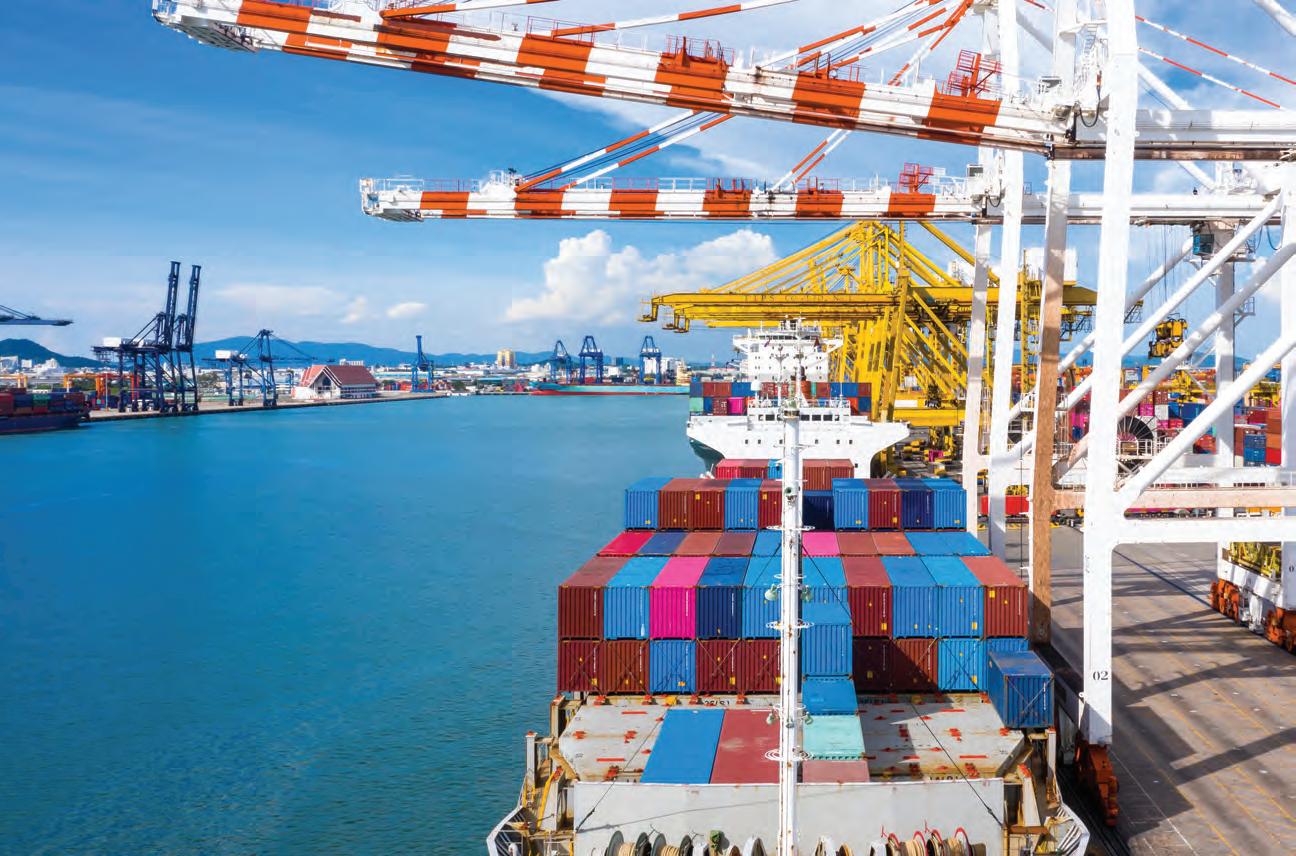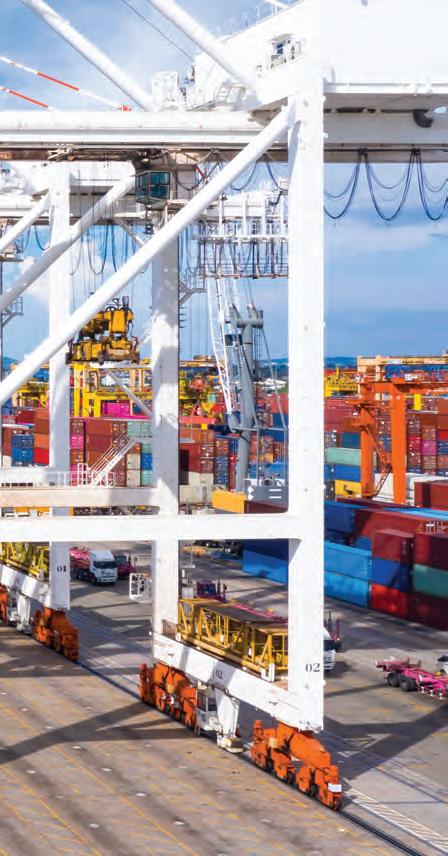
4 minute read
Omicron, resilience, and innovation
from MHD March 2022
by Prime Group
Omicron has led to challenging conditions for container transport operators.
RESILIENCE AND INNOVATION THROUGH OMICRON
The omicron variant has tested the strength of the Australian Supply Chain over the past few months. MHD uncovers how industry professionals are prioritising staff retention and using the latest technology to counter delays and disruptions.
Recently, Scott Morrison urged global business leaders and governments to tackle bottlenecks in global shipping and boost passenger flights in an effort to open international trade.
Speaking of the increasing costs and inflationary pressures, the Prime Minister says critical supply chains are yet to recover from pandemic pressures.
“The world needs a fast recovery, reminiscent of those in the 1980s and 1990s, not the prolonged sluggish recovery that followed the [global financial crisis] in the 2010s,” he says.
“We need a greater collective focus on easing the constraints on international shipping and on the recovery of passenger flights. The lesson of these times is that supply chain resilience requires a new partnership between countries, governments and businesses.”
Locally, new isolation changes were agreed to by the Australian Health Protection Principal Committee – comprised of state and territory chief health officers – to keep close contacts of COVID-19 cases working in critical supply chains from having to isolate at home.
Under the changes employees in the food logistics, manufacturing, transport, postal and warehousing industries will be allowed to leave quarantine to attend work if they are asymptomatic.
“Workers will only be eligible to leave self-isolation if their employer determines that their absence from the workplace poses a high risk of disruption to the delivery of critical services or activities, and they are unable to work from home,” a statement from the Department of Health read.
The new rules come after industry bodies called on governments to make rapid antigen tests available for the logistics sector, after some transport companies reported up to half of their staff were unable to work.
Arthur Tzaneros, CEO of Australian Container Freight Services (ACFS), one of the largest trucking companies for the country’s major ports and whose clients include Coles, Aldi, Kmart and Bunnings, says there was a 25-50 per cent shortage of drivers across the east coast during the first two weeks of January.
On the sea front, The Container Transport Alliance Australia (CTAA) director says omicron has led to the hardest conditions ever for industry players.
Staff shortages, terminal congestion and significant competition to secure vehicle booking slots are combining to create the difficult conditions, according to Neil Chambers from the CTAA.
“Container transport operators across Australia have reported to CTAA that they are experiencing between a five per cent to 20 per cent reduction in available staff, including heavy vehicle drivers, warehouse staff, forklift drivers, container unpack crews and administration,

due to COVID infections and isolation requirements,” Neil explains.
“Compounding this are staff shortages at customers’ premises, as well as at international container stevedore terminals and at empty container parks across Australia, significantly delaying the movement of containers through the supply chain.”
No doubt these are testing times, forcing industry leaders to be decisive and innovative. One strategy businesses have found successful – and somewhat necessary – is emphasising the best possible treatment of their staff, avoiding turnover which would further compound disruptions to everyday operations.
Recent data from shift-work platform Deputy shows shifts rostered but not worked went from 7.1 per cent to 13.4 per cent in New South Wales’ retail industry over December. Like retail, much of the workers in supply chain rely on shifts, which places pressure on a business when workers can’t work on scheduled dates.
Ashik Ahmed, CEO and co-founder of Deputy, says despite government support being critical, industry needs to focus on what they can control through the unprecedented level of staff shortages.
“We are seeing businesses with 700 employees having 20 to 30 staff resignations per week,” he says. “This is the time to overinvest. Businesses are thriving because of people power and a sense of community. Shift work doesn’t provide the same level of ambition for workers.”
Another important approach to counter omicron disruptions has been the adoption of the latest IoT and software technology.
George Harb, Regional Vice President, Business Ecosystems APAC at OpenText says you can’t futureproof disruptions, but you can control reaction time and the ability to foresee where a point of failure may occur.
“The ability to foresee comes from your data analytics,” he says. “Pulling information from suppliers, retailers or trading partners is important. Then you’re looking for trends – for example stock may be diminishing in a certain location. You pair this with information from other elements like industry news and analyst information to define what the data means.”
Digital transformation allows businesses to be a part of a bigger ecosystem, to better understand exactly what’s happening with logistics operations.
“The data can help form key decisions,” George says. “If you know that products are going to take longer to arrive because of upcoming shipping delays, you can trigger an order before you usually would. Having a digital supply chain allows you to adapt and make decisions quicker.”
George notes that IoT takes the level of transparency to another level by matching business assets with digital assets.
“You’re able to pull information from devices or shelves, monitoring what’s being picked up and what’s being returned,” he says. “It helps businesses understand production lines and capacities, identifying failures and putting in place a contingency to increase productivity.” ■
Digital transformation allows businesses to be a part of a bigger ecosystem.











